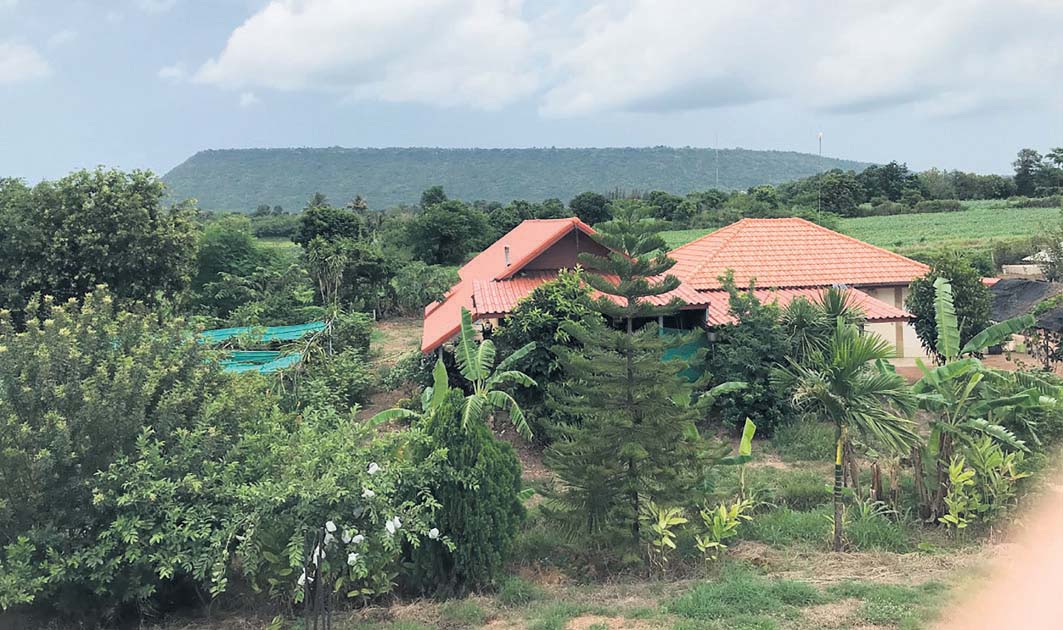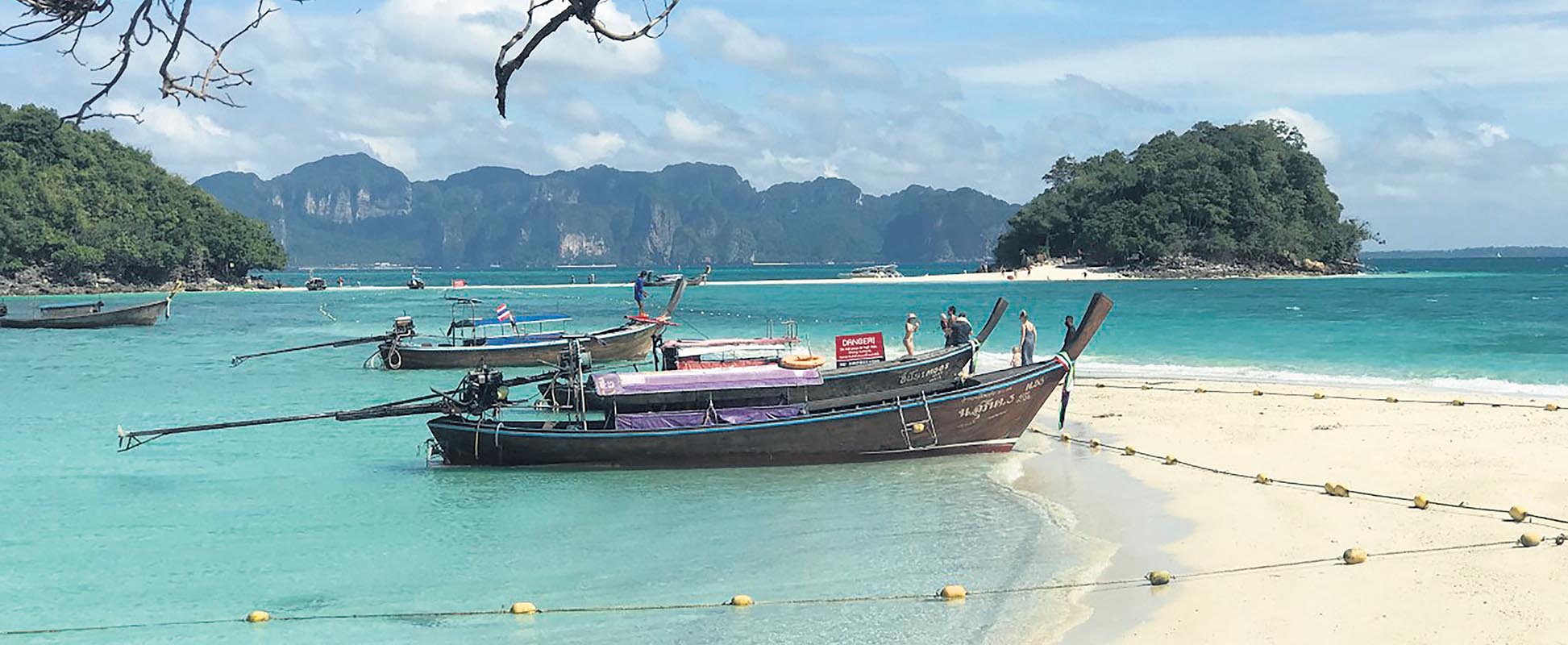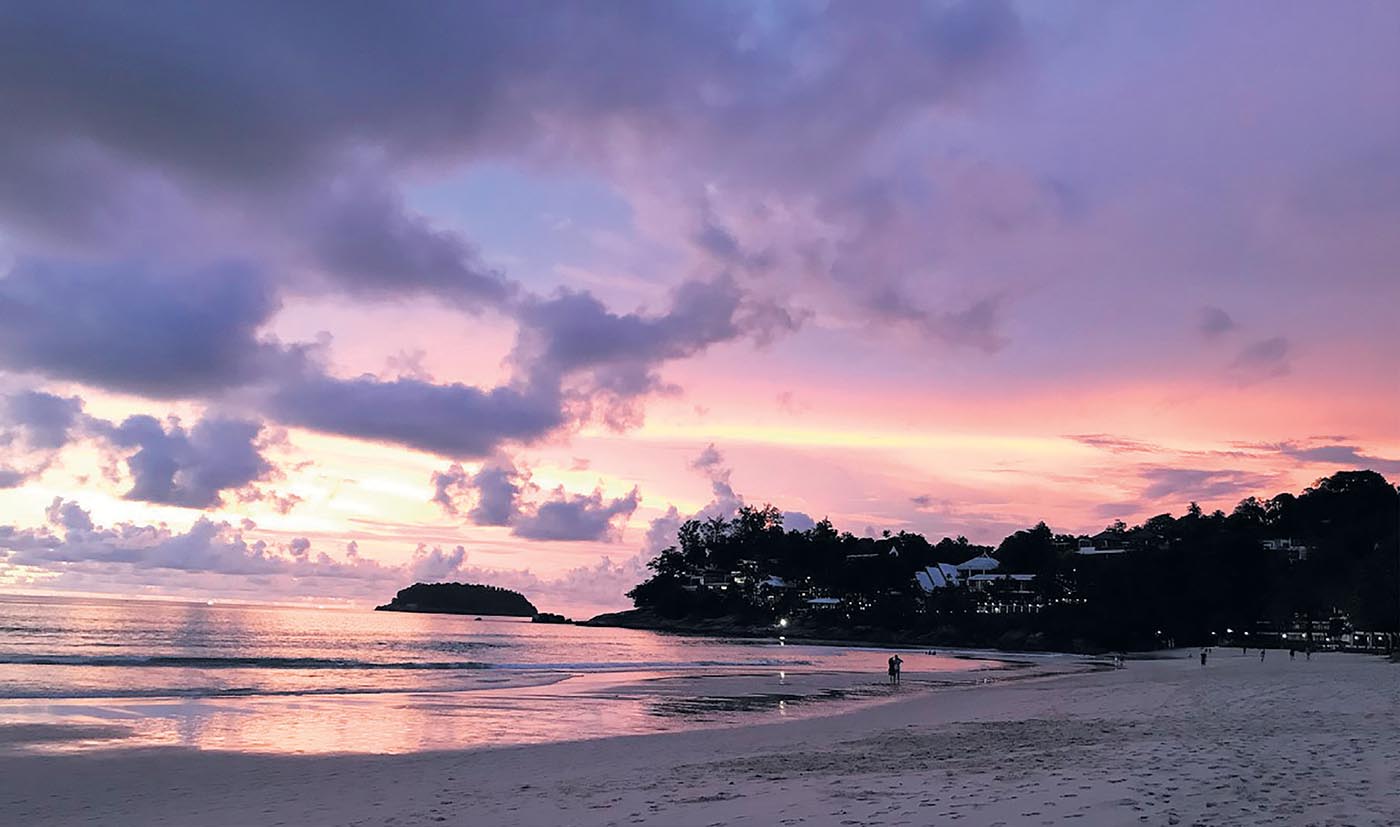Dynamics of Thai-Dutch Couples’ Spatial Mobilities: Gender, Aging, and Family
There has been migration from Thailand to Europe since the late 1970s. Such flows predominantly occur though cross-cultural marriages between Thai women and European men. As a result of these cross-border marriages, women form the majority of Thai migrants in Europe. In recent years, Thai women and their Western husband increasingly reversed the flow, moving from Europe back to Thailand. Consequently, this “both-ways” migration pathway is highly gendered, such that about 80-90 percent of Thai migrants to Europe and North America are women, and 80-90 percent of Westerners settling in Thailand are men. 1 The particular case of the Netherlands is no exception.
Gender and “both-ways” migration pathways
Since the 1970s, many factors have facilitated Thai women marrying Dutch men: globalization, the advent of information technology, the expansion of international transport, global mass tourism, economic difficulties in Thailand, and increased labor demand in the service sector in urban Thailand. In the past few decades, the reverse flow of Thai-Dutch partners moving back to Thailand has also become discernible. It is difficult to pinpoint the exact number of Dutch migrants in Thailand due to the blurry boundaries in distinguishing between a tourist, an expat, and a migrant. However, the staff who works at the Dutch Embassy in Bangkok estimates that there were around 20,000 Dutch migrants in Thailand in 2020. Generally, census surveys show that 192,000 foreigners from Western countries resided in Thailand in 2002, increasing to 260,000 in 2010, with 75% of them male. 2
Studies on marriage migration have considerably emphasized the border-crossing of migrants, particularly women, from the Global South to the Global North. In the cases of Thai-European marriages, researchers have examined the flow of Thai women to Europe, their adjustment and integration in the receiving country, and their maintenance of transnational relations with those left behind. The reverse flow of Thai women and their spouses back to Thailand has received little attention. This article elucidates the Thai-Dutch couples’ spatial mobility from the Netherlands to Thailand, which is shaped by uneven global socio-economic forces, gender, aging, and changes in the couples’ family lives.
Motivation of Thai-Dutch spouses’ mobility to Thailand
In 2020, I conducted in-depth and open-ended interviews with 12 Thai women and six of their respective Dutch male partners. All 12 women had resided with their Dutch spouse in the Netherlands for periods between five and 31 years before moving back to Thailand. The women and their Dutch husbands have been living in Thailand between three and 12 years.

Fig. 2: Sai’s house and fruit farm in Nakorn Rachasima, Northeastern Thailand (Photo by the author, 2020).
Reaching the life stage of retirement is one of the most important factors triggering the Dutch men’s decision to move to Thailand. As a result of the relatively cheaper cost of living in Thailand, those who requested an early retirement already calculated that the pension they have received, ranging from 1000-2000 EUR per month, is enough to allow their comfortable lifestyle in Thailand. They prefer the warm weather, vibrant atmosphere, and easy-going lifestyle in Thailand. The popularity of Thai tourism and the Thai government’s policies to promote tourism have led to enclaves in which businesses cater to the demands of foreigners.
The different age gap between the Thai-Dutch couples influenced the Thai wives’ initial hesitation to return home. When they first arrived in Thailand, the Dutch were between 57-70, while the women ranged from their late 30s to early 50s. Having resided in the Netherlands for years or even decades, the Thai women to some extent became familiar with the Dutch way of life, were able to secure their occupation, and gained social networks with Thai female friends. The women did plan to move back to Thailand ultimately, but they did not anticipate doing so quite so early. Nevertheless, the women envisioned that living in Thailand would enable them to provide day-to-day care to their elderly parents. Moreover, they agreed to return to Thailand in order to fulfil the gender role of being a good wife and a dutiful daughter.
For instance, Pear (46 years old) finished her education in vocational school and worked as a staff member at the Municipality in Nakorn Pathom prior to her marriage migration. Her Dutch husband, Adriaan, is 66 years old. In 2000, she holidayed in the Netherlands and met her Dutch husband through the latter’s uncle. After a two-year long-distance relationship, she migrated to the Netherlands. Adriaan was employed as a factory worker and had two children (aged 31 and 40) from a previous marriage. Pear worked as an office cleaner and eventually received a permanent contract. She also built up good relations with many Thai women and frequently had parties with them. Upon learning of Adriaan’s decision to move to Thailand, she was reluctant to undertake such mobility, but they did move in 2016. After arriving, they constructed their house in the same neighborhood as Pear’s mother in Nakhon Pathom in order facilitate daily care and visits.

Fig. 3: Krabi Province, Thailand.
Economic motivations
The phenomenon of return migration is often portrayed as the movement of retired and aging migrants, and this does apply to many Thai-Dutch couples. This study reveals that, in addition, Thai-Dutch couples also move to Thailand searching for economic betterment and new opportunities. The 2008-2012 economic crisis in Europe was the most severe economic recession since the Great Depression. Some Thai women and their Dutch partners were unemployed during that period. With gradually growing labor demands in the Asian market, they envisioned more economic opportunity in Thailand. The life history of Nok is an example. Nok (39 years old) and her Dutch husband Jaap (57 years old) have been married for 12 years, and they have two daughters (aged five and seven). They moved back to Thailand and have been living in Thailand for three years. Nok migrated to the Netherlands in 2007 to pursue her Master’s degree in hotel management. While there, she met Jaap. After five years in the Netherlands, Nok and her two daughters followed Jaap to India since he was offered work as an engineer in the petroleum industry there. After living in India for four years, they returned to the Netherlands. Because of the economic recession, many employees in the company were laid off, and Jaap was unfortunately one of them. He was finally hired as a freelance consultant and sometimes made trips to Asia. They thought that moving to Thailand would be more convenient for him to do business trips to Malaysia and Brunei. They chose to reside in Krabi, Nok’s home province. As Krabi is a well-known tourist site for foreigners, Nok applied her experience in hotel management and took cooking courses in Bangkok. Then, she opened a restaurant to sell Western foods and drinks in Krabi.
The fluidity and difficulty of transnational mobilities
Relocation to Thailand should not be regarded as unidirectional or permanent. After their relocation to Thailand, many Thai-Dutch partners sometimes made a trip to the Netherlands for two or three weeks. Because many of them sold their houses in the Netherlands or terminated their rental contracts, they were likely to stay at their family’s and friends’ residences. It should be noted that the longer they stayed in Thailand, the less often they made a trip to the Netherlands, as they felt to some extent uneasy about bothering their family and friends by staying with them. Only two couples interviewed still keep dwellings in both Thailand and the Netherlands.
While the majority of the Thai-Dutch couples interviewed enjoyed their relocation to Thailand, a few of them encountered difficulties adjusting. Sometimes, after relocating to Thailand for many years, it was not as they imagined it would be or as they had experienced during their previous holidays back to Thailand. In such cases, they considered moving back to the Netherlands, as was the experience of Daan (67 years old) and Ploi (60 years old), who had been married for 29 years. They had met while Daan was on holiday in Thailand in 1989, when he visited the restaurant where Ploi worked as a waitress. After continuing a long-distance relationship for two years, Ploi and her daughter, born from a previous marriage with a Thai man, migrated to the Netherlands in 1991. Daan had separated from his Dutch wife. While residing in the Netherlands, Ploi worked as a waitress at a Thai restaurant and later as a factory worker in an electronics factory. After many years of working as a train driver, at 57, Daan felt burnt out, and decided to take early retirement. They moved to Thailand in 2009, but Daan ultimately wanted to return to the Netherlands: “After living here [in Thailand] for nearly 12 years, I started to feel bored. When you take an annual holiday to Thailand, you are like a tourist. To earn a daily living in Thailand for many years is rather different. It is also difficult for me to adjust to living with local Thai neighbors.” Recently, they planned to sell their residence in Thailand and wished to move back to the Netherlands. However, they had to remain in Thailand since it was very difficult for them to sell the house during the time of the Covid-19 pandemic and the economic recession. If overseas travel were less restricted, they would consider making a short trip to the Netherlands and would stay for a few months with Ploi’s daughter. They expect that this trip would bring Daan the feeling of refreshment. If they could sell their house in Thailand, then they could afford to buy a residence in the Netherlands, and their wish to return to the Netherlands would be fulfilled.

Fig. 4: Phuket Island, one of the most popular touristic places in Thailand (Photo by the author, 2021).
Marital conflicts and separation between Thai-Dutch spouses that happened after their relocation to Thailand resulted in the Dutch husband’s mobility back to the Netherlands. For example, Sai (46 years old) is originally from Nakorn Rachasima and graduated from vocational school. Her Dutch husband, Jasper, is 56 years old. Sai has a 23-year-old son from a previous relationship. Sai met Jasper when he was holidaying in Thailand in 2001. They first met at an internet café in Bangkok, where Sai worked as a cashier. Afterwards, they kept up a long-distance relationship for two years before marrying. Sai migrated to the Netherlands with her son in 2003. Sai and Jasper ran their own business providing booth rentals for exhibitions in the Netherlands. When the economic recession hit their business and sent them into debt, they decided to move to Thailand, where Sai owned land: “We started to build two houses and to grow fruit trees on the pieces of land we bought in Thailand under the supervision of my brother in Thailand [in 2010]. We moved to Thailand in 2012. Jasper and I lived in one house and my son stayed with my mother in another house in the same compound.”
Sai earned an income from being an informal property agent and selling the fruit from her own farm. After seven years of residing in Thailand, Jasper felt very lonely as he had no occupation, only stayed home, and totally relied on Sai financially. He asked Sai to move back to the Netherlands with him, but she refused. She had put a lot of effort and investment into the fruit farm. She also needed to care for her elderly mother. They started to quarrel quite often. He decided to move back to the Netherlands alone in 2019. They were separated, but they still contact each other sometimes.
After living in Thailand for many years, some Dutch husbands, particularly those older than 70, expected to stay and die in Thailand. They anticipated relying on their Thai wives for care in their old age. None of them mentioned their adult children or relatives in the Netherlands as potential resources for support as they aged. This illuminates their experience of uncertainty in terms of receiving care in the later stages of life. For instance, Arjan and Nang, who are 73 and 49 years old, respectively, returned and have lived in Thailand for 11 years. Nang graduated from secondary school, originates from Nakhon Ratchasima, and has one 22-year-old daughter from her previous marriage with a Thai man. Arjan was previously married to a Dutch woman, has three adult children (now with their own children), and later got divorced. Arjan and Nang first met each other in Belgium in 2003, when Nang travelled there under a tourist visa. After maintaining a long-distance relationship for a year, Arjan arranged a long stay visa for Nang to migrate to the Netherlands. After marriage, Nang was a housewife and Arjan worked as a government official in the military. When Nang had resided in the Netherlands for five years, and Arjan was 62 years old, they moved to Thailand: “Many male foreigners are likely to be much older than their Thai wives. When I get older, I expect Nang to give me daily care. If Nang unfortunately would pass away before me, I am not sure if I could rely on my in-law. I want to live the rest of my life and die in Thailand. I reserved my grave-to-be in the cemetery at one church in Nakorn Rachasima.”
Thai-Dutch couples’ spatial trajectories at the intersection of gender, aging, and family
The cases of Thai-Dutch transnational marriages and their movements from the Netherlands to Thailand underline the interplay between gender, aging, transitions in family life, and the unequal socio-economic global forces that shape transnational spouses’ perceptions and practices of mobility. The Thai-Dutch couples’ relocation to Thailand should not be regarded as merely a unidirectional movement from the Netherlands to Thailand during a supposed sedentary stage. Instead, this article challenges the existing stereotype of sedentariness in Thai-European marriage migration. In other words, the geographical movement to Thailand of these transnational couples does not signify the ending of their mobility and permanent settlement. Rather, their trajectories of mobilities also encompass the continued moving back and forth between Thailand and the Netherlands as well as the local process of daily spatial movements, all of which are shaped by the gender roles of being a wife and a daughter. After relocation to Thailand for multiple years, a few Thai-Dutch couples experienced marital difficulties or encountered the difficulty of adjustment in residing with the local Thai people. This changing of family life influences the possibility of moving back to the Netherlands. Nevertheless, some Dutch husbands reaching old age preferred to remain in Thailand until the last stage of life. All of these elements shape the transnational partners’ perceptions and practices of mobility and stasis in global, local, and day-to-day contexts.
Panitee Suksomboon Brown is an Assistant Professor at Faculty of Sociology and Anthropology, Thammasat University, Thailand. She is interested in marriage migration, elderly care, family relations, and gender issues. E-mail: spanitee@hotmail.com